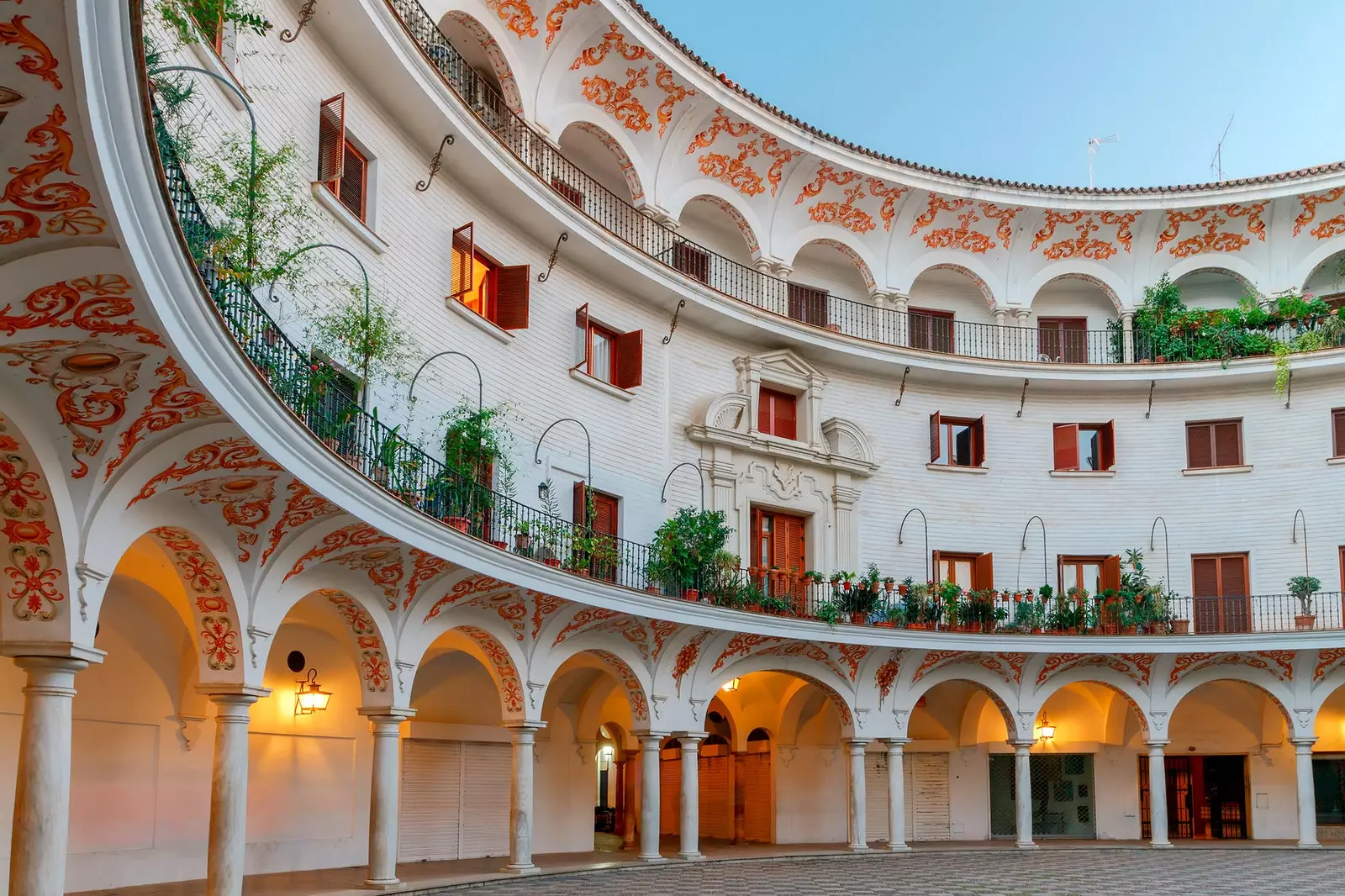
The B side of Seville: there is life beyond the Giralda
Today we say bye bye to the Seville topics . We took to the streets of the Sevillian capital eager for new plans. But we're in luck: Seville It has become one of those cities where there is always something new to do.
It is no longer necessary to base a visit on your admired Giralda, its mythical Betis street or the new Metropol Parasol . Because, as much as it is hard for us to believe, there is more life beyond its tourist emblems. And today, my friend, we are determined to discover them all.
Like anywhere in the world, cities are discovered by walking. So we put our batteries and start in the mythical Sherry Gate , at one end of the Constitution Avenue. As we move towards the cathedral -that we are going to propose alternatives does not mean that we ignore the great referents-, we stayed on the left side of the street.
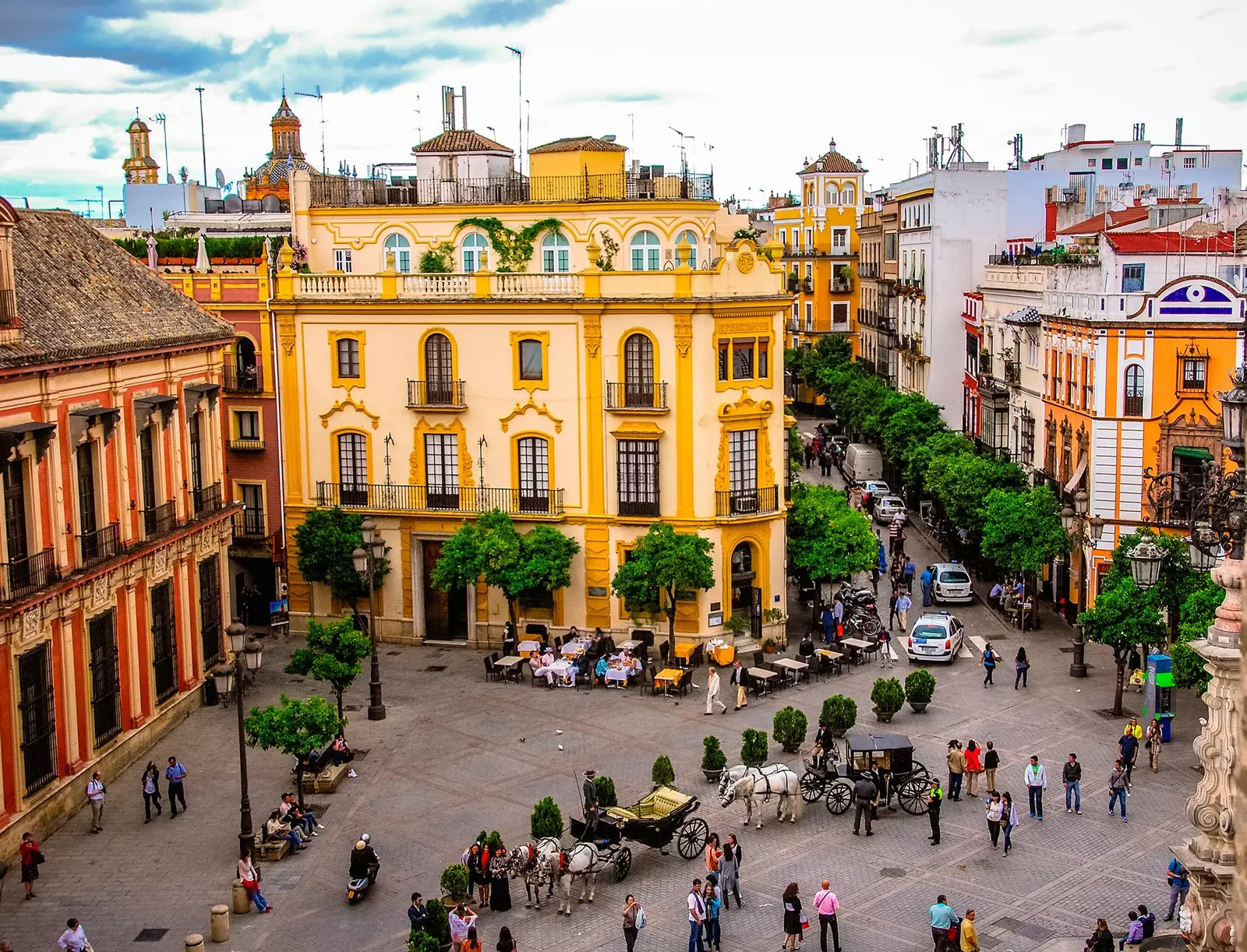
Plaza del Triunfo in the Barrio de la Cruz, Seville
An imposing passage preceded by a huge doorway leads us to the Town Hall Square , one of those wonderful corners that They go unnoticed even by the Sevillians themselves. And, deep down, we are grateful that it is so.
The square, semicircular in shape, is made up of a series of arcades supported by marble columns and decorated with wonderful frescoes by the Sevillian artist Jose Palomar . And how fresh! Above them, a three-story building, and right in front a small part of the historic Almohad wall of Seville.
We stop for a second and suddenly we are aware: here silence and tranquility govern everything. We soon forget about the hustle and bustle of the city we just left.
The ground floor of the square houses small businesses dedicated to philately and numismatics. Precisely in the shelter of the arcades, every Sunday, a most peculiar market dedicated to its collectors is held.
Before leaving, a short stop at The lathe , a pastry shop specializing in sweets made in the cloistered convents of Seville, will not be out of place. Traditional cakes that concentrate the Sevillian pastry essence based on ingredients as simple as eggs, flour, sugar, almonds, cinnamon or angel hair. The best souvenir to take home.
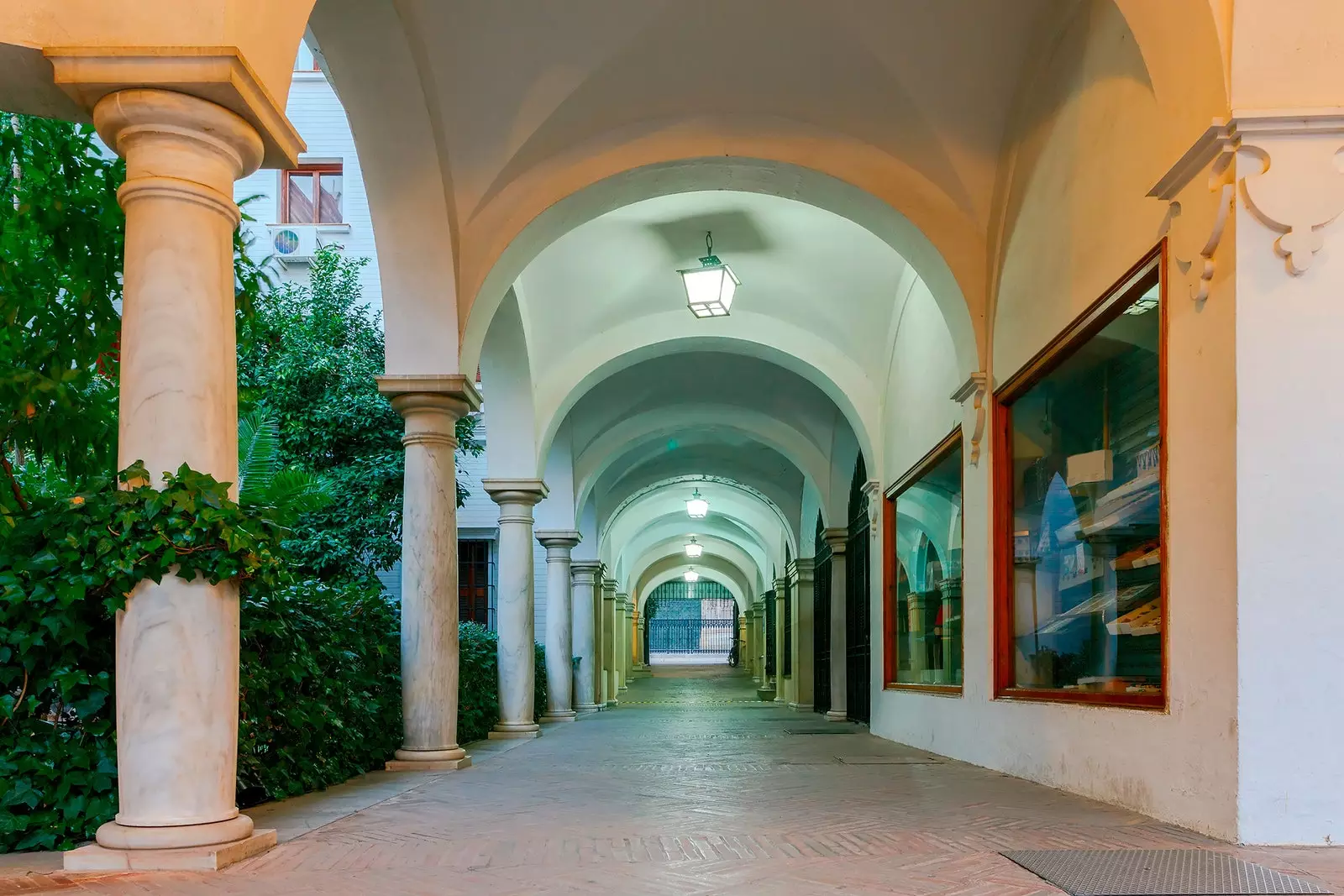
Ground floor of the Plaza del Cabildo, in Seville
DOES IT MAKE ONE OF PALACES?
We do not move from the center and we go towards the number 39 of Mateos Gago , main artery of Santa Cruz neighborhood . There, ignored by most tourists, is an architectural reference from the beginning of the 16th century: the ** Casa de Salinas .**
We enter this immense Sevillian palatial house and we cannot fail to be surprised by its architecture, which combines the Renaissance, Gothic and Mudejar styles typical of a time when the area was inhabited by the most renowned families of Seville. Although over the centuries it underwent different modifications promoted by its different owners, In recent times, work has been done to recover its original details..
Of enormous artistic and monumental value, while we go through its courtyard , we cannot avoid paying attention to details such as the latticework or the tiles that stand out and dazzle from each of the corners. Although the Salinas family continues to live on the first floor of the house, from Monday to Friday the lower area can be visited.
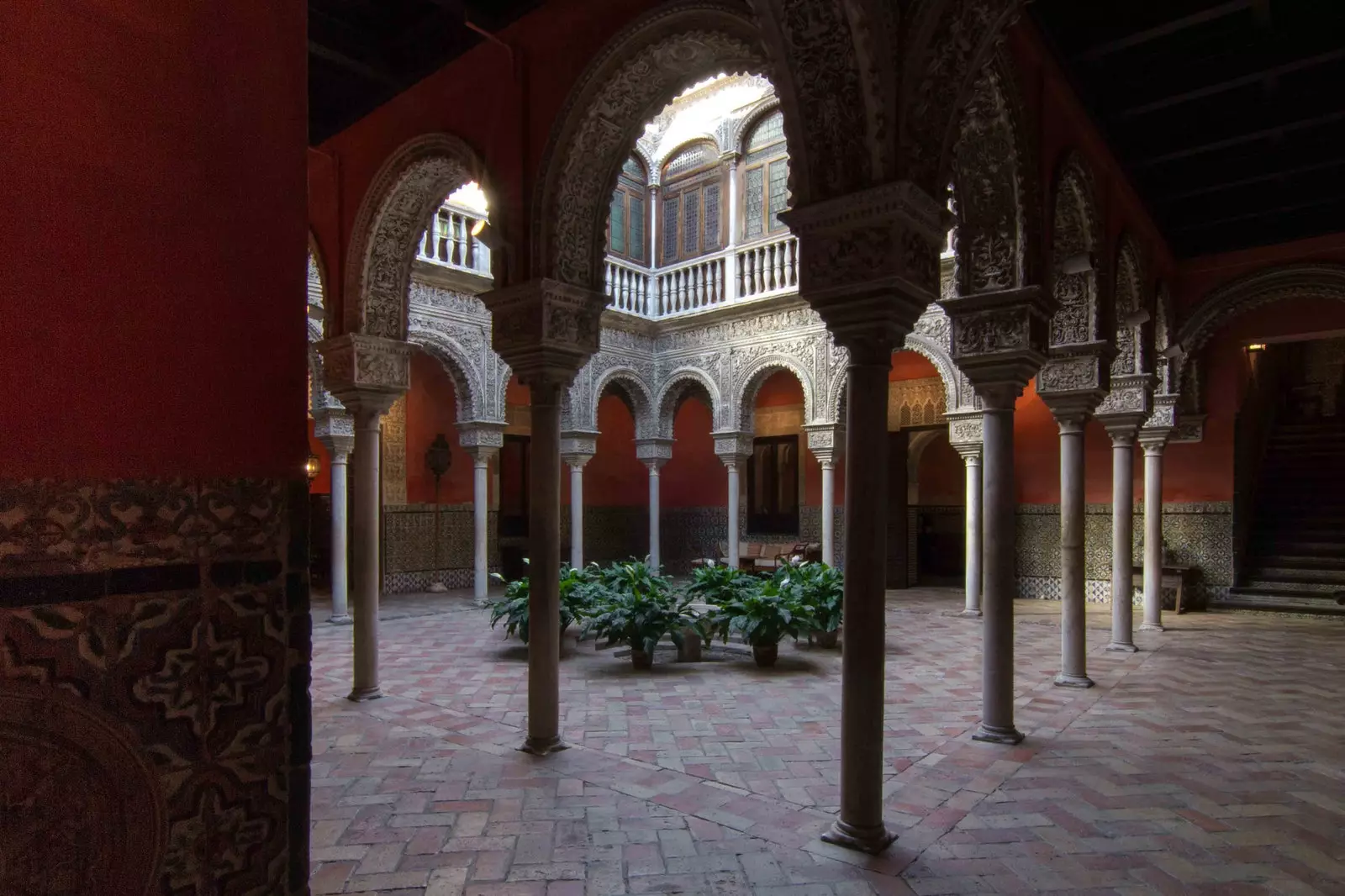
An essential Sevillian palatial house to understand the city
We leave the house and it turns out that we liked discovering typical Sevillian palaces, hey... We want more! So, neither short nor lazy, we set course for one that sounds to everyone, even if it is hearsay. **The Dueñas Palace** –yes, yes, the same one where the deceased lived Duchess of Alba -, decided to open its doors to the public in 2016 and it is our next destination.
We begin our tour of the 1900 visitable square meters of this palace like someone entering a real museum. And it is that, in this case, not only its architecture, a mixture of Mudejar and Gothic, is important. Also the art collection, from none other than 1425 pieces of all kinds - pictures of Sorolla or Gonzalo Bilbao , sculptures, tapestries or jewelry- worth a visit.
We walked through the stables, through the Santa Justa Garden, the chapel or the Patio del Limonero. And here we stop more than necessary to assimilate one of the anecdotes that we like the most about the place: this corner saw the birth of the very Antonio Machado , whose father was administrator of the palace.
In fact, years later, the poet would write: “My childhood is made up of memories of a courtyard in Seville and a clear orchard where the lemon tree ripens…” . As simple as that!
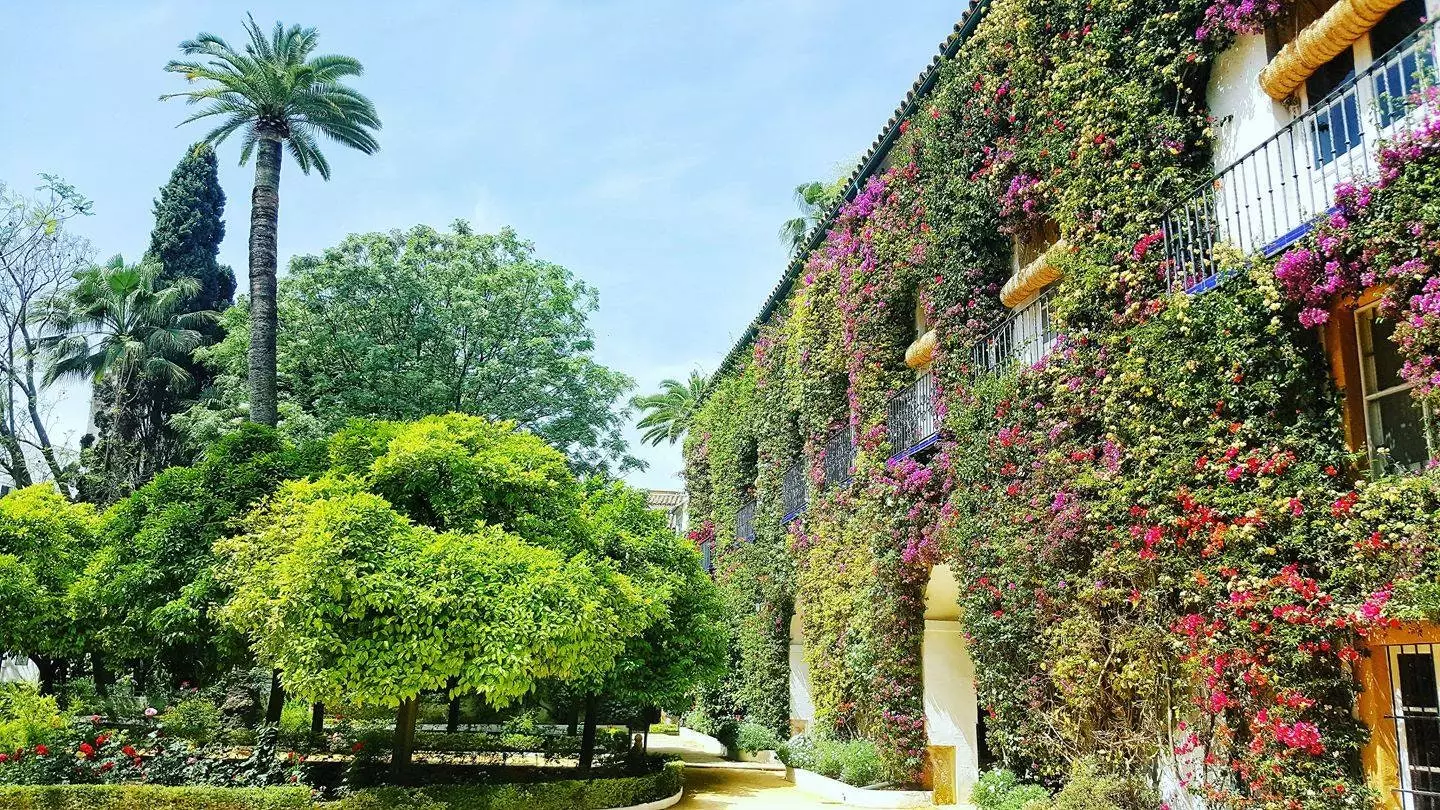
Duenas Palace
THE TECHNICAL STOP TO EAT
And if there is an area in the city that could be called "alternative", in which to give us the pleasure of pulling a card, that is " Soho Benita ”. In this neighborhood, local artists and designers come together, willing to offer a different proposal from the large commercial chains that invade everything.
Originality in the form of art galleries – De Limbo -, bookstores – A cat on a bicycle -, fashion stores – Isadora or La Importadora - and even hat shops – Patricia Buffuna -, will surprise us more than we can imagine. We are in the perfect universe in which to lose ourselves. Of course, without looking at the clock.
Or well, maybe we will take a look at it. Above all, because there is still a lot of Seville to discover. And this time what we want is to learn more about its history. Wait… We have an idea!
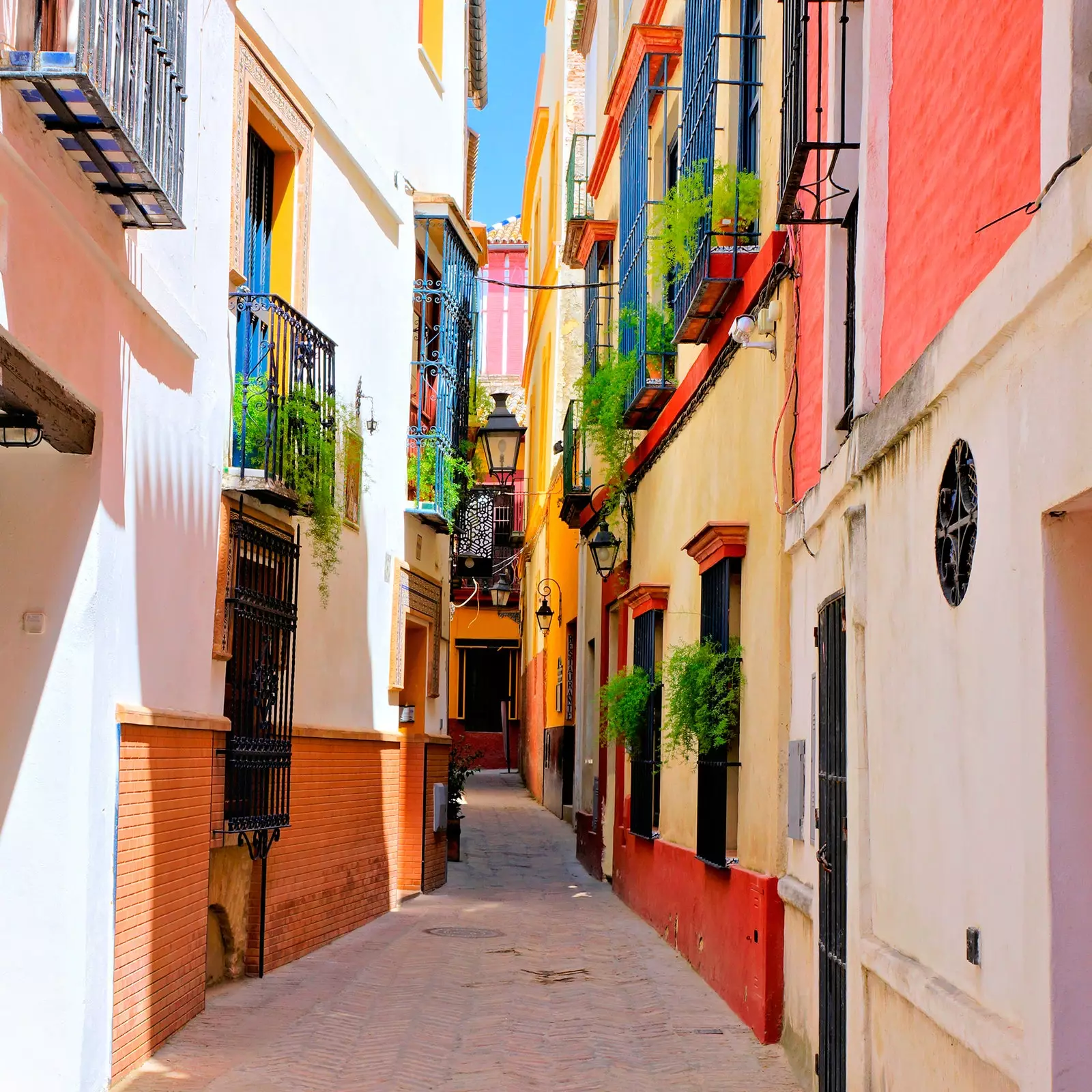
Let's wander through Seville
THE SEVILLE OF 29
We go to the other end of the city: the Palm Avenue He was a faithful witness of everything that happened at the beginning of the 20th century in Seville. And one of the most important events was, without a doubt, the Ibero-American Exposition of 1929 , which completely changed the urban configuration of the city.
Eager to learn more about the subject, we are encouraged to go through some of the most representative pavilions of that exhibition . Although today they have very different functions, they do continue to compose great jewels of Seville architecture worthy of, at least, a walk on our part.
the old pavilion of Seville, today converted into both the Casino of the Exhibition as in the Lope de Vega Theater , maintains the stately air of yesteryear and is worth a visit. On Avenida del Cid is the old Portuguese Pavilion, today used as a consulate of this same country. The same happens with the Colombian Pavilion, a beautiful building full of nods to indigenous culture with representations of sacred elements, gods and animals.
One of the most beautiful pavilions, the one from Peru, with windows and balconies reminiscent of Cuzco colonial architecture, currently belongs to the CSIC, while those of Brazil, Mexico and Uruguay are used by the Sevilla University.
The walk can be as long as the body asks us, although, yes, the end will be clear: America Square, a magical place where you will have to decide between feeding the pigeons, or going to museums: here you will find both the Museum of Arts and Popular Customs as the Archaeological Museum. The two buildings were designed by the distinguished Sevillian architect: Hannibal Gonzalez.
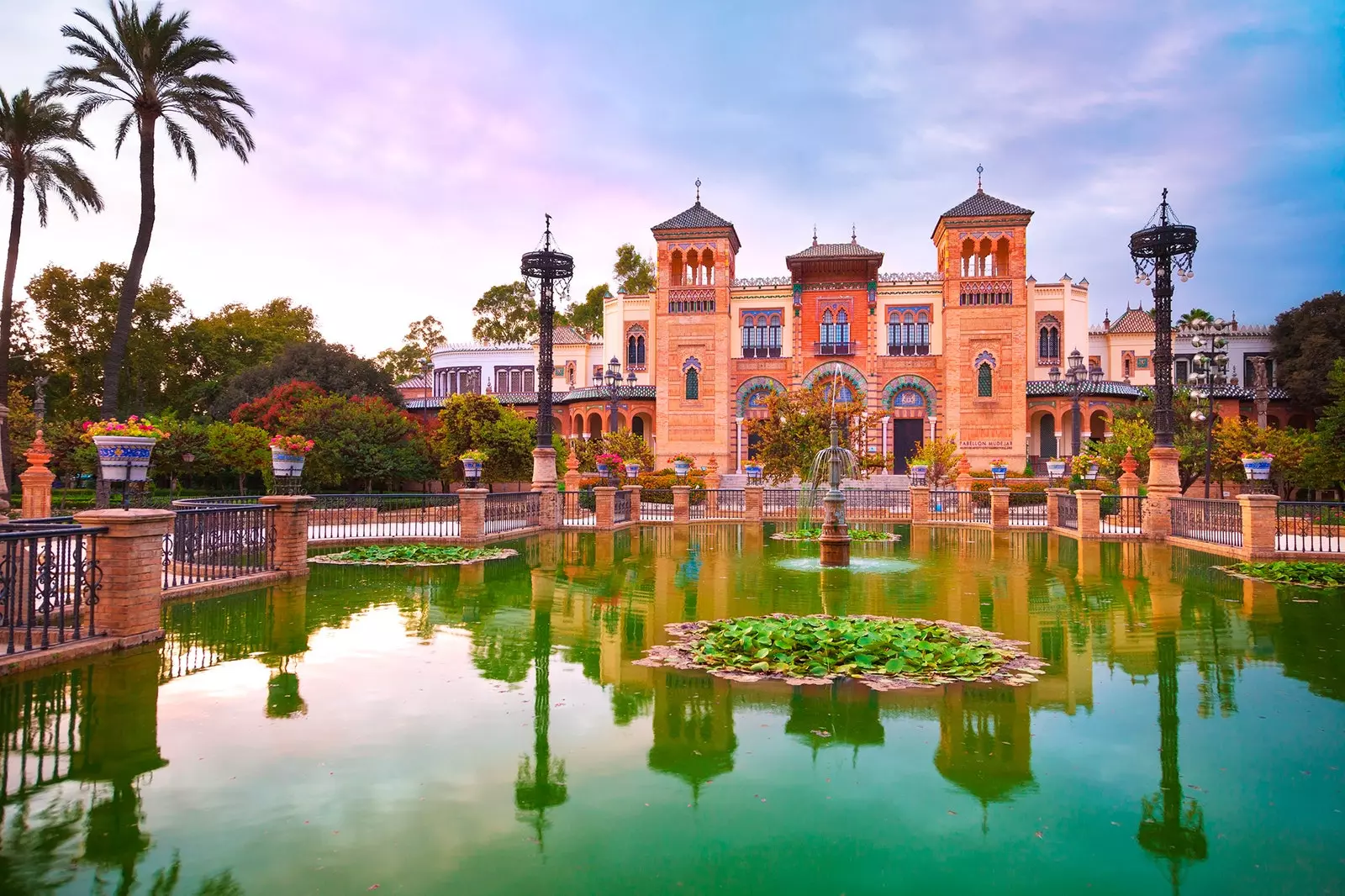
Mudejar Pavilion of the Seville Expo
NIGHT FALLS IN SEVILLE
Night falls in the capital of Seville and what the body asks of us is something to do. So, to put the finishing touch to our alternative Seville, we go to the ** Room X **, which has become, since it opened its doors in 2014, the reference concert hall in Seville.
With a program that encompasses styles as disparate as pop, funk, soul, rock or reggae , and with a stage that welcomes national and international artists practically every day of the week, it is the ideal place to enjoy live music – the sound, by the way, is spectacular – in Seville.
And if it happens that our visit to Seville is on the weekend, we'll be in luck: after the concerts, the Sala X club encourages the most dancing until 7 in the morning. As long as our bodies hold out, of course! What better way to say goodbye to the city?
***If you want to know more, here are some curious and original plans to get to know the city**
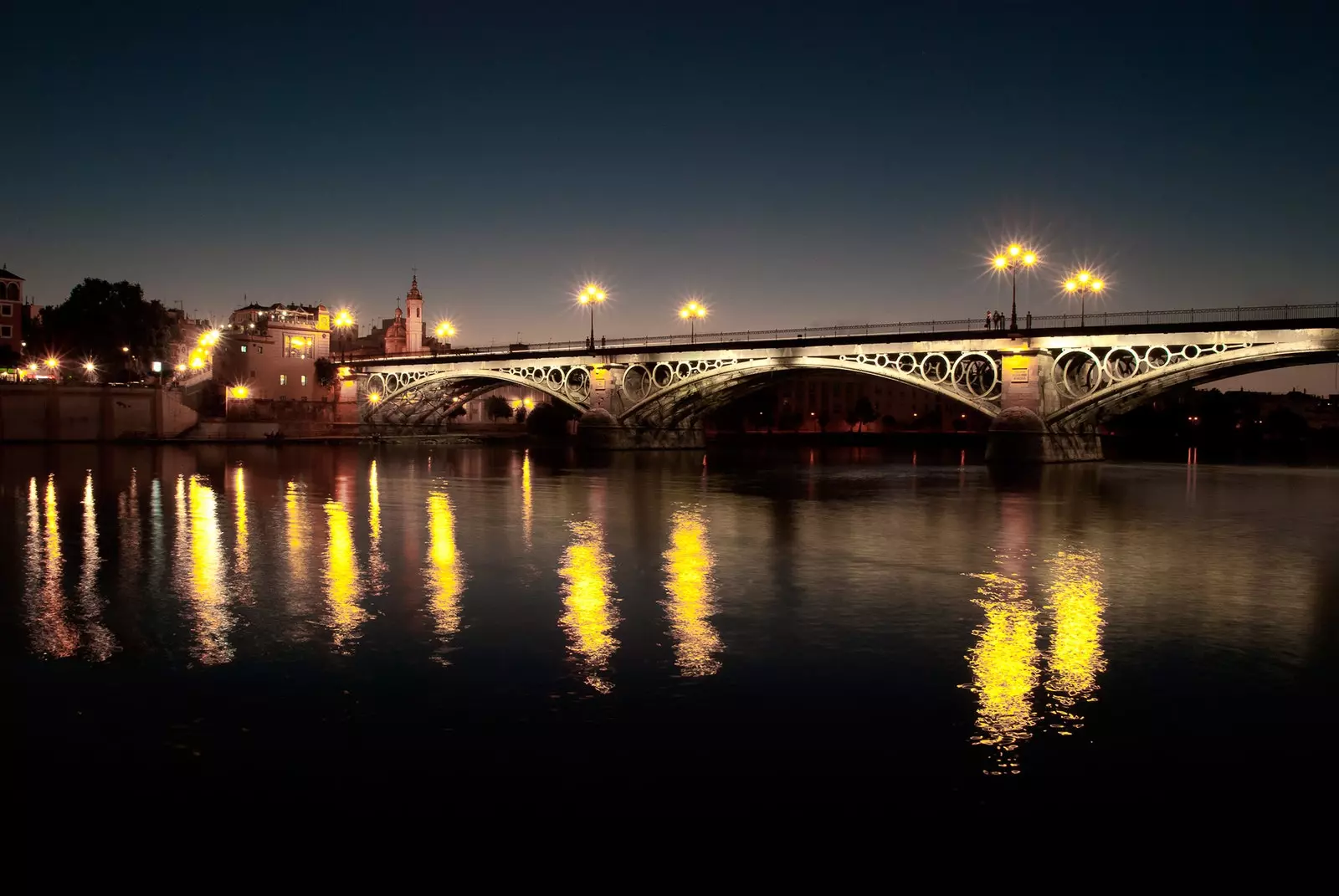
The endless nights of Seville
*Report originally published on March 18, 2019 and updated on January 24, 2020
